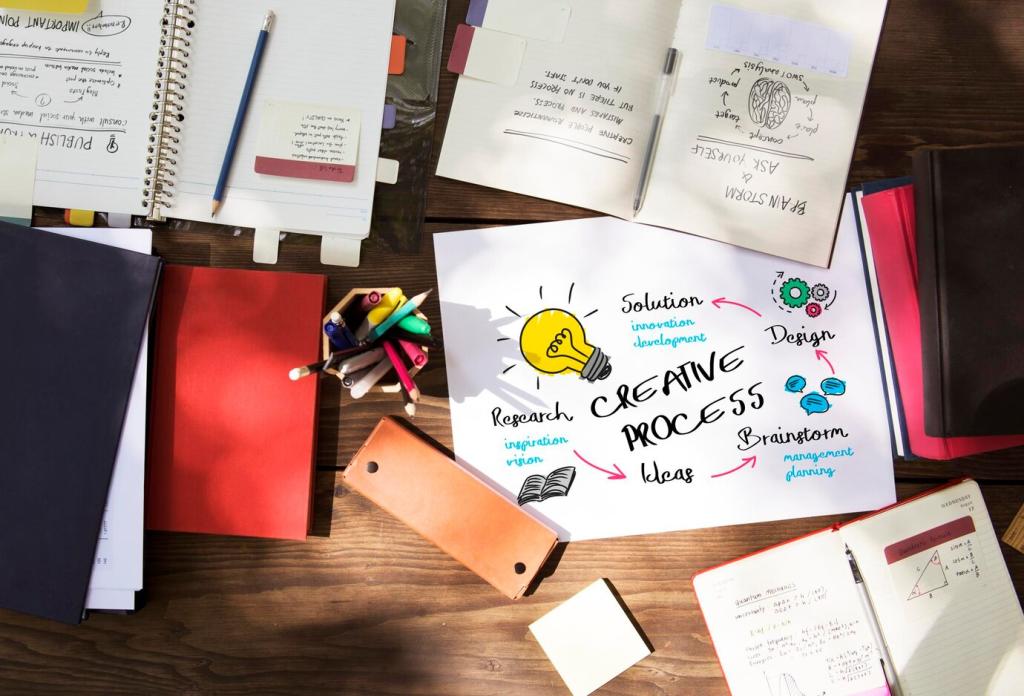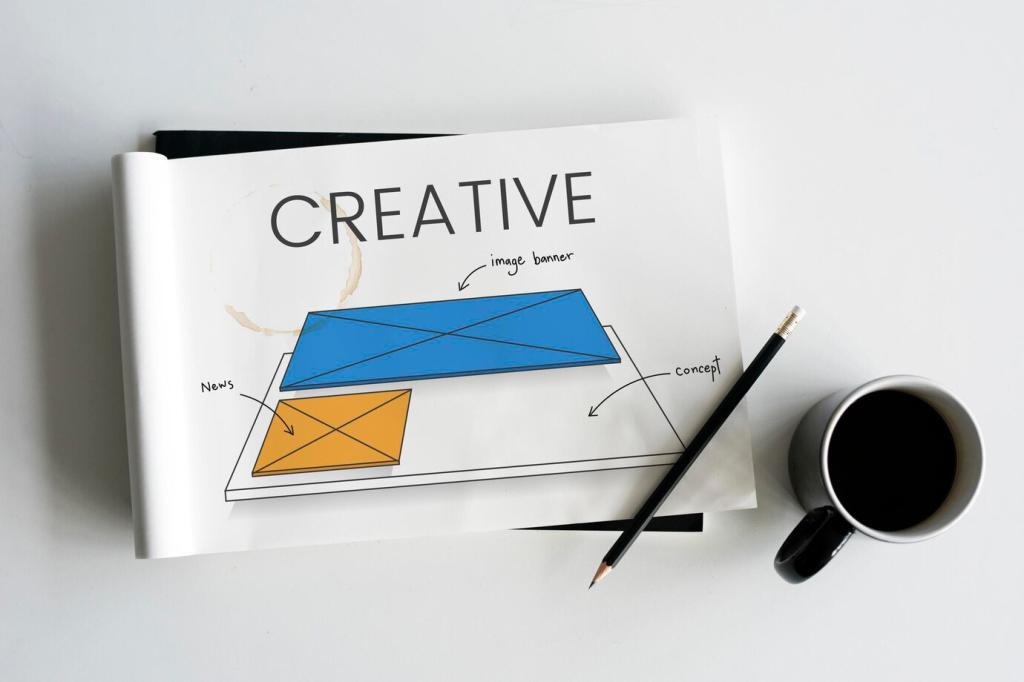Translating Voice into Visual and Spatial Choices
Words like grounded, kinetic, or poetic suggest color behaviors. Grounded might choose sage, bone, and gunmetal; kinetic might prefer vermilion and chrome. Build a voice-aligned palette for both interiors and brand assets, then document how it flexes across proposals, mood boards, and signage.
Translating Voice into Visual and Spatial Choices
Let materials articulate tone. Oak whispers stability, handmade tile suggests intimacy, brushed brass implies ceremony, and terrazzo reads conversational. When specifying, write a one-sentence voice rationale beside each material. The language trains your team to select with intention and present with confidence.
Translating Voice into Visual and Spatial Choices
Brand voice is multisensory. Studio playlists, office scent, and even the pace of meetings reinforce character. A contemplative voice leaves breathing room; an energetic voice embraces crisp transitions. Align these choices so clients experience your identity before you describe it. Share your studio ritual below.
Translating Voice into Visual and Spatial Choices
Lorem ipsum dolor sit amet, consectetur adipiscing elit. Ut elit tellus, luctus nec ullamcorper mattis, pulvinar dapibus leo.





